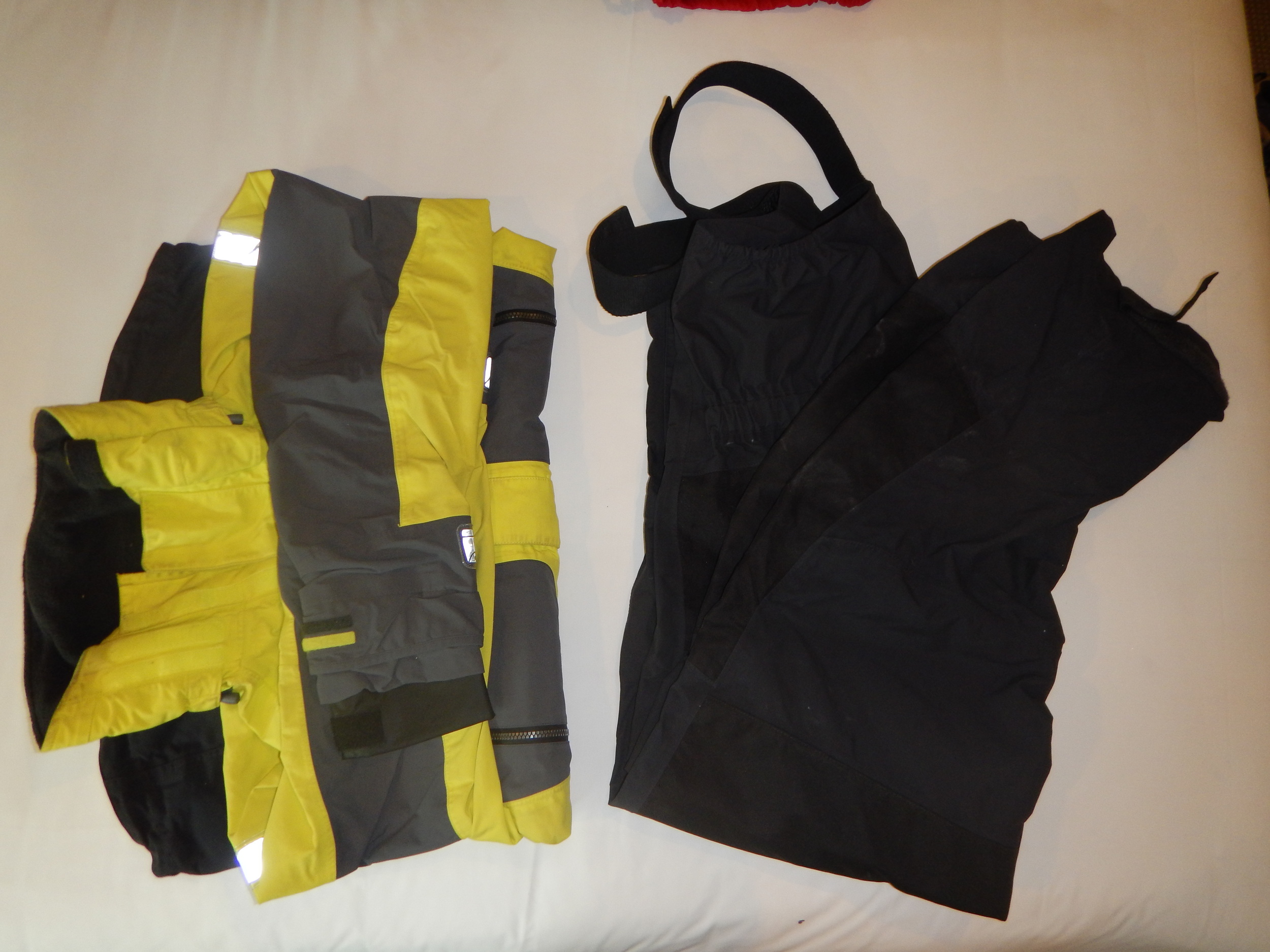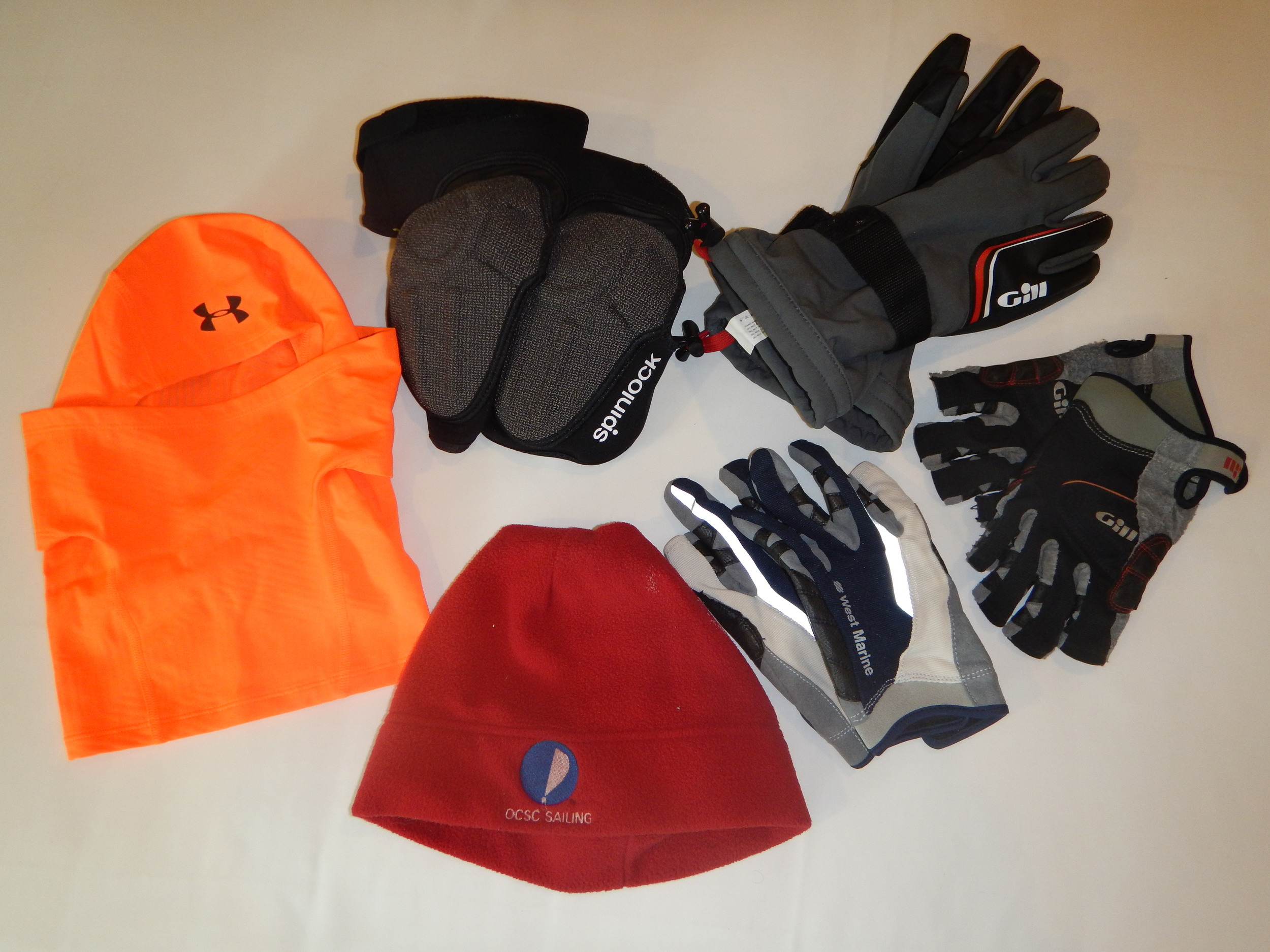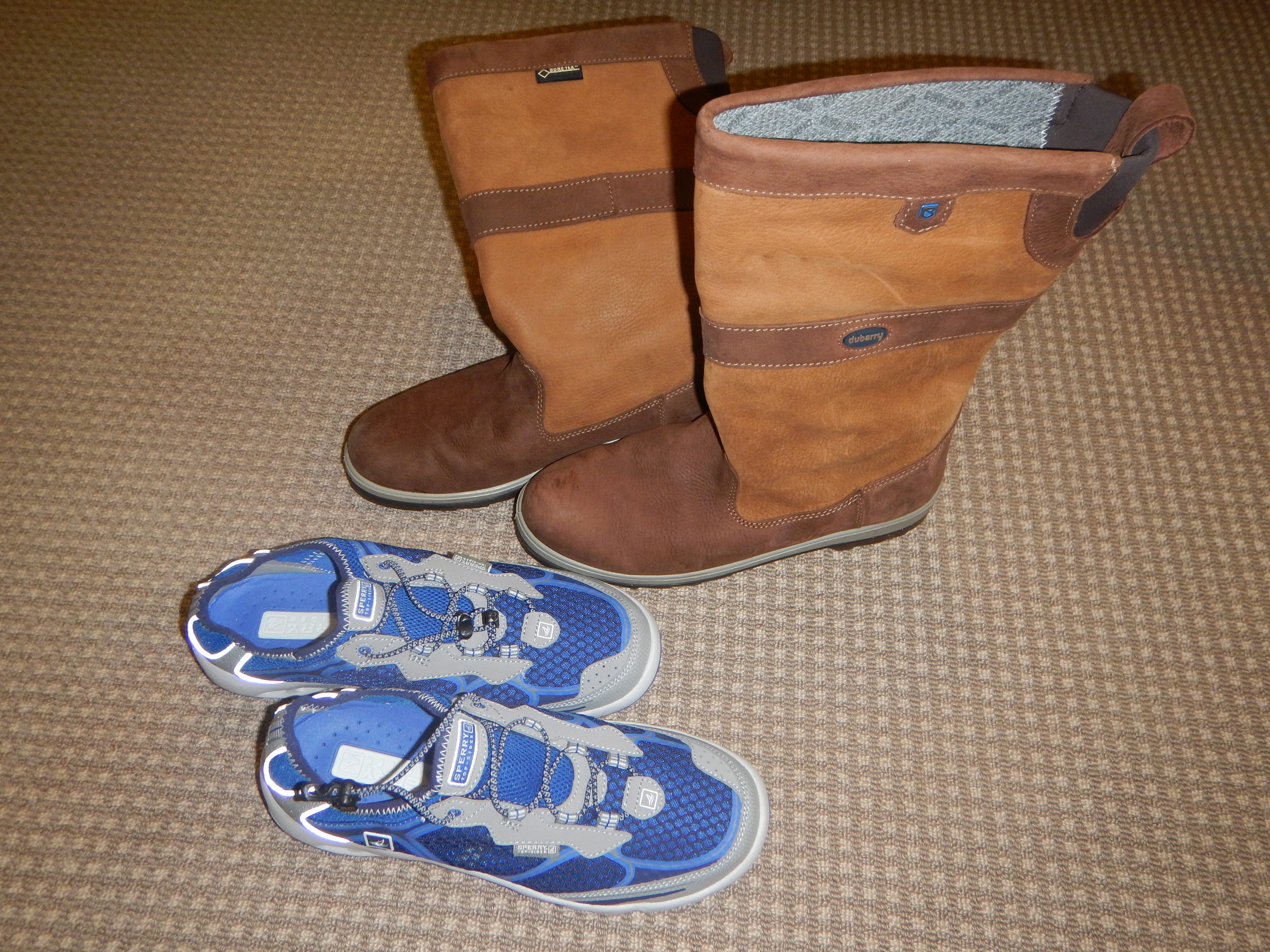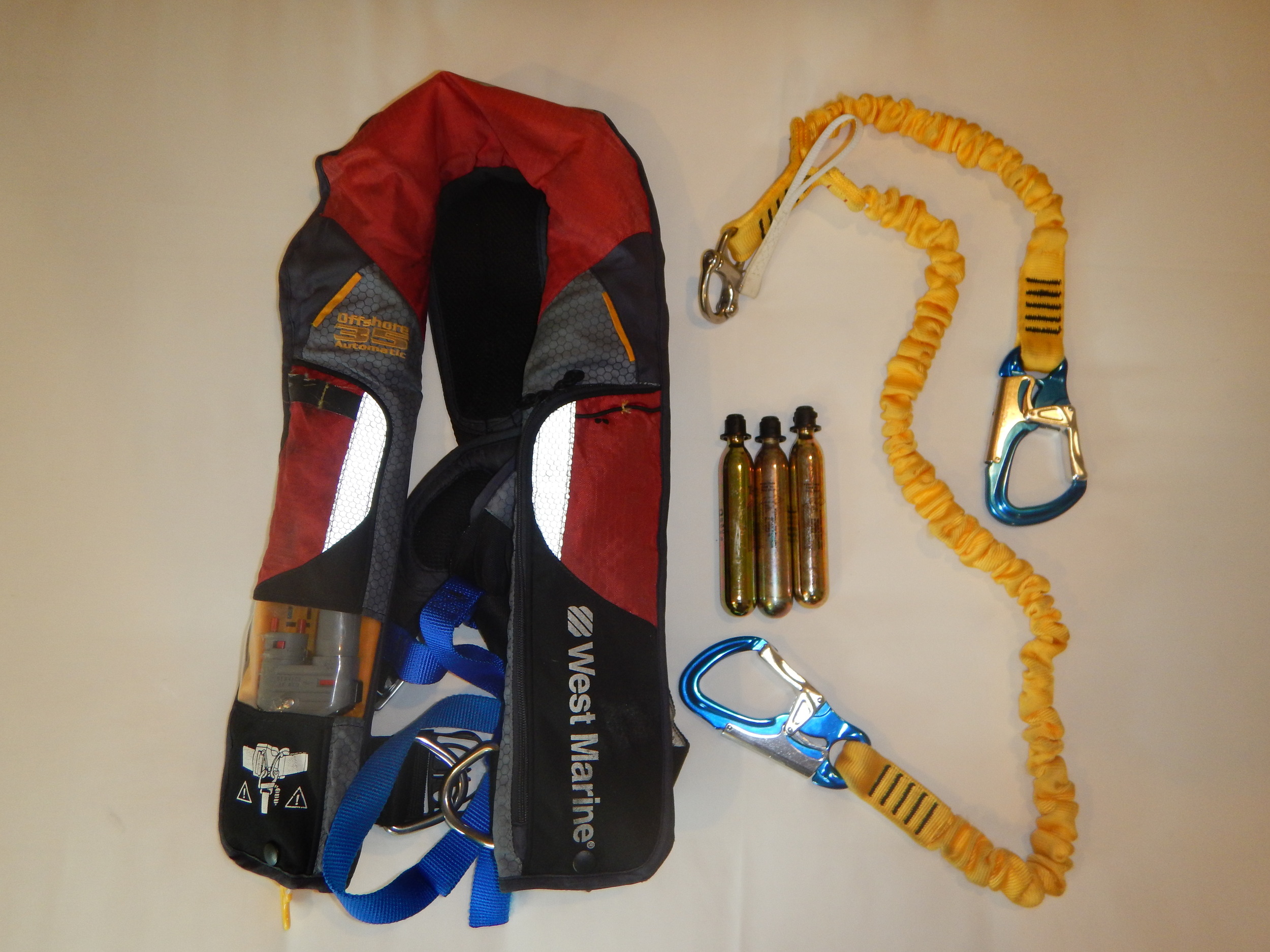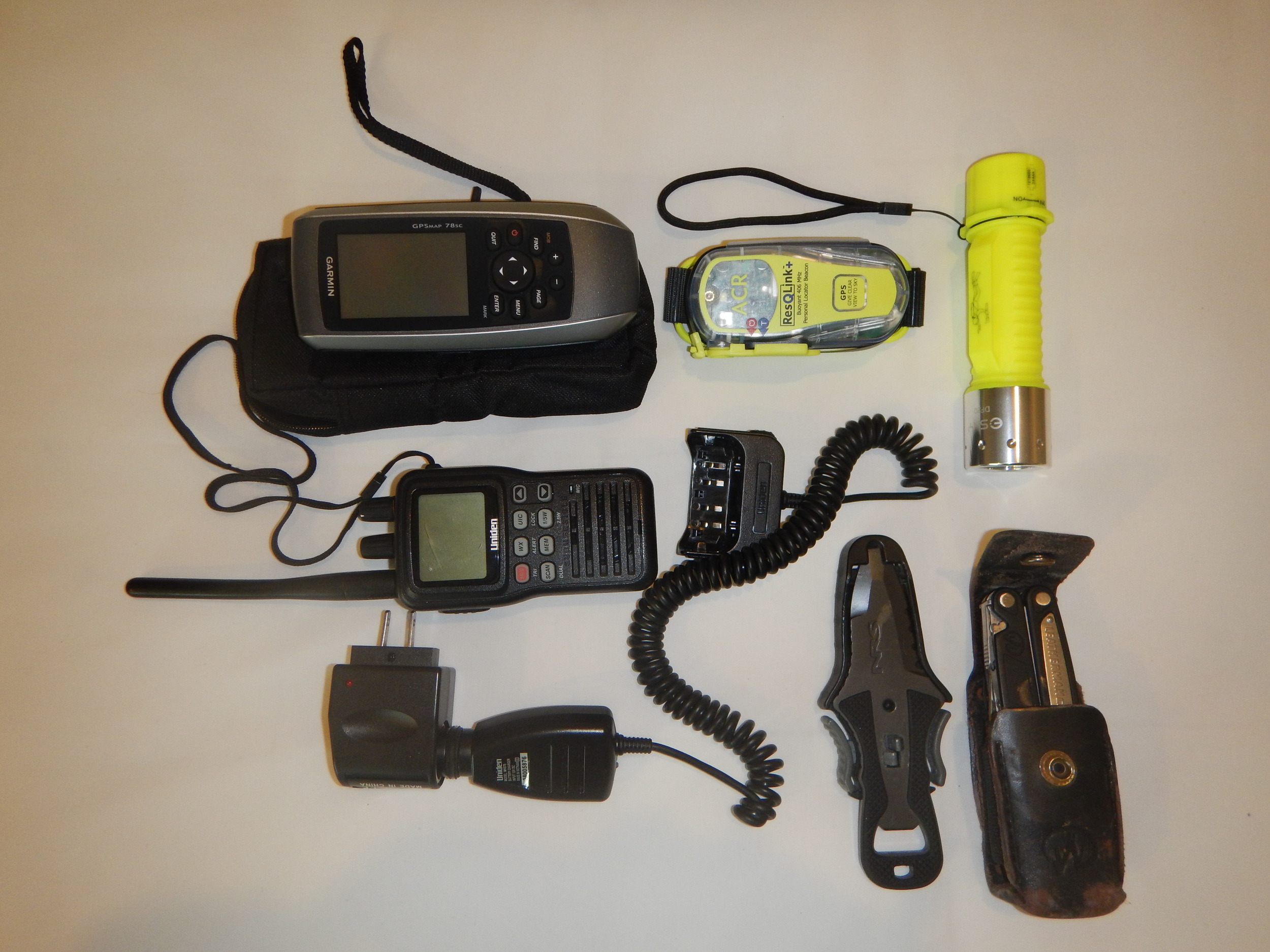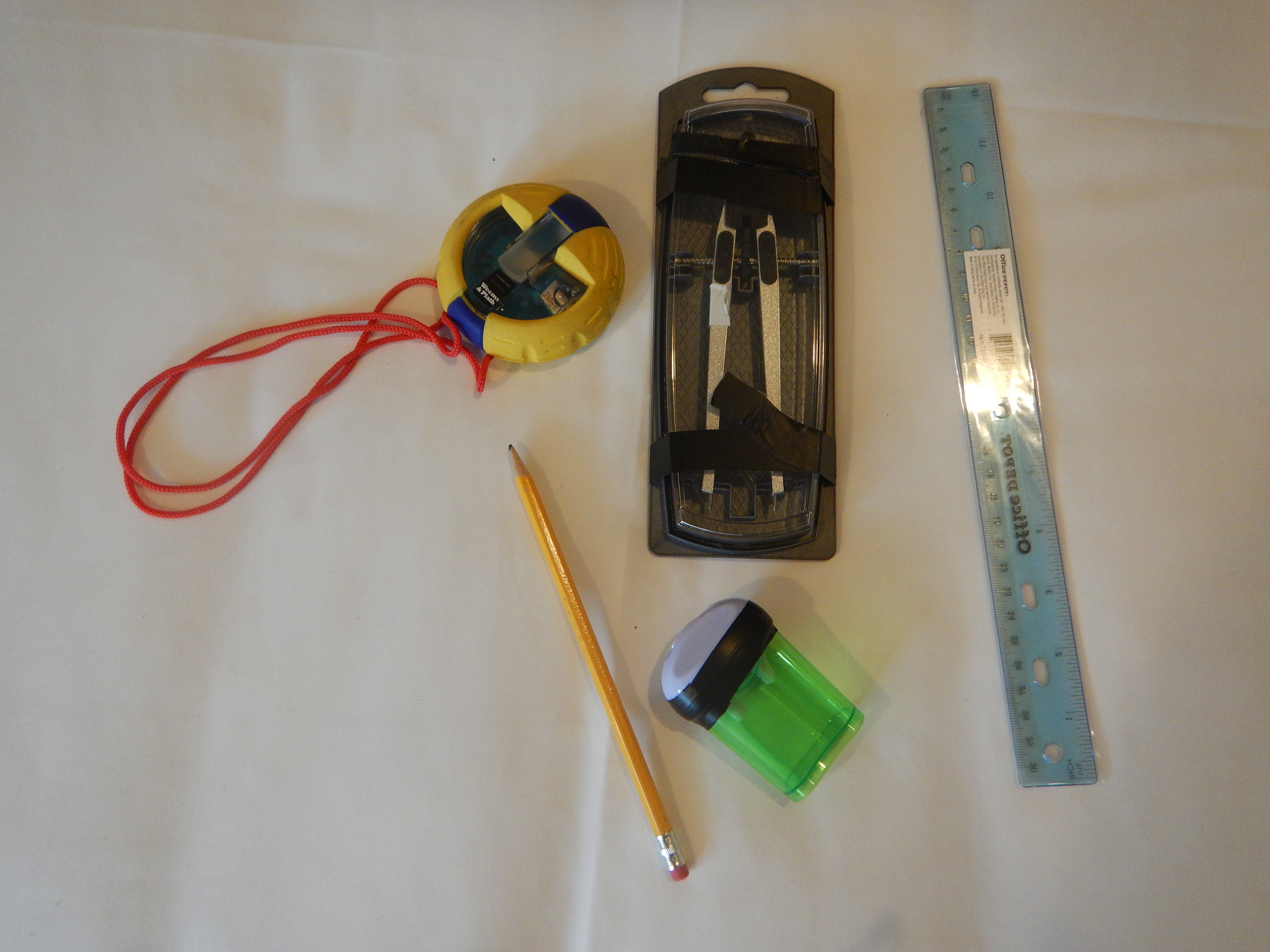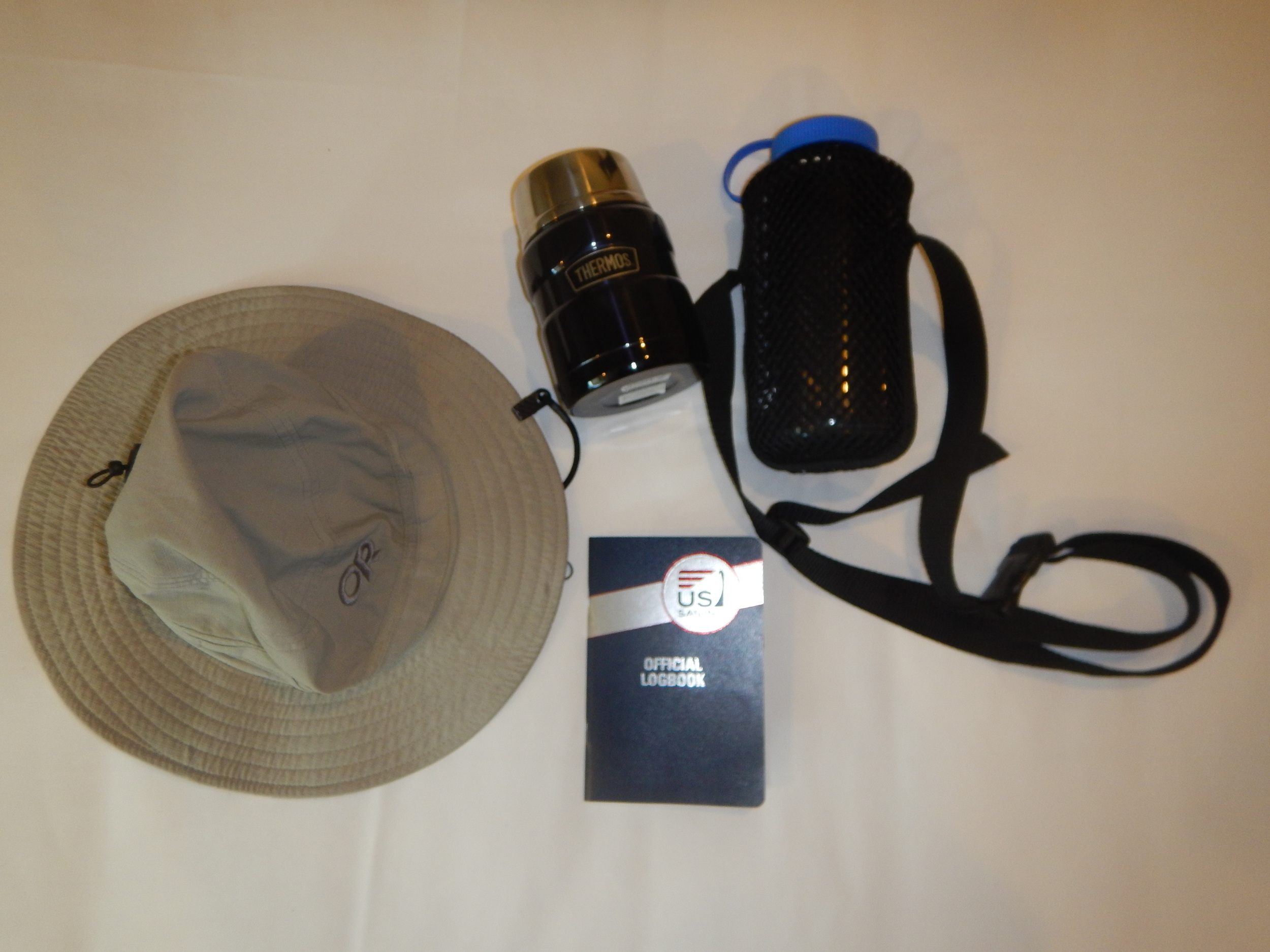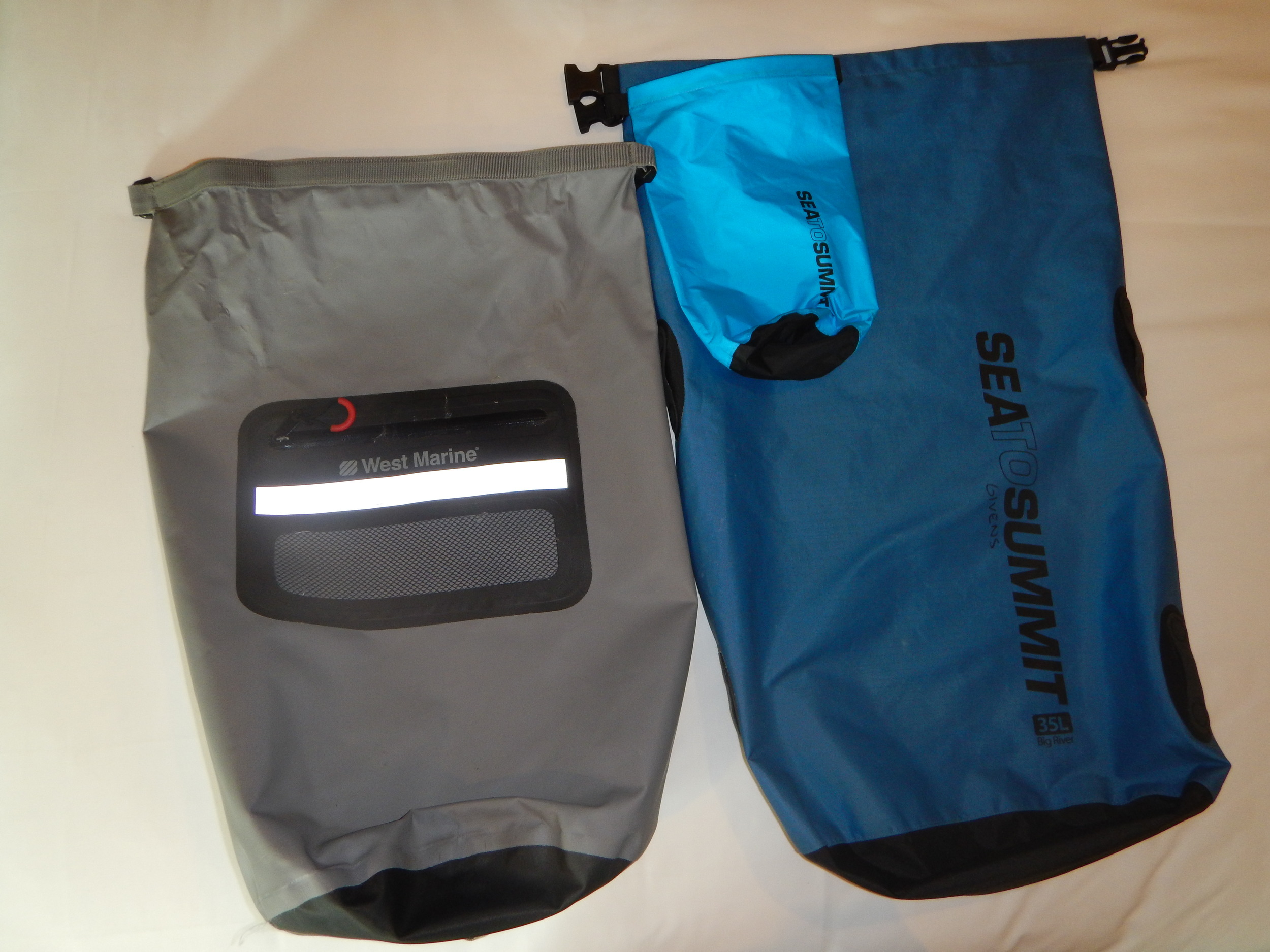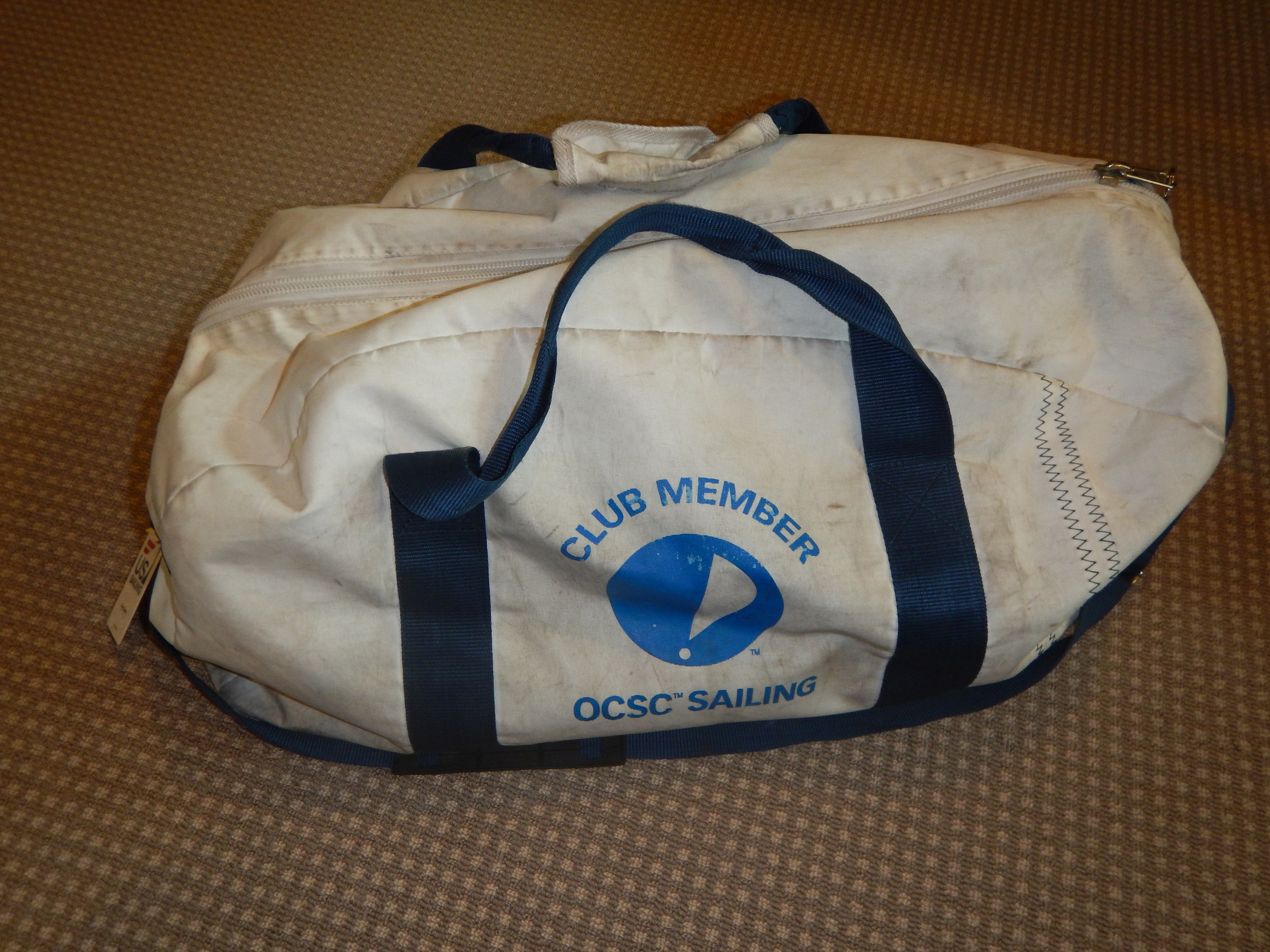Sailing Gear
Adding sailing as a primary activity on my adventures in turn adds a whole new set of gear I need to bring along. I can leverage some of my basic Travel Gear (base layers, headlamp, etc.), but there is a lot of specialized gear, too. See below.
CLOTHING
My base layer consists of the same set of clothes as mentioned in my “Travel Gear” page. Quick-dry Ex Officio boxers, quick-dry Patagonia T-shirt, and Mountain Hardwear Piero pants. I usually add an Icebreaker or Patagonia long sleeve shirt under the T-shirtt. Then I layer with fleece or zippered pullover. And for normal conditions, my outer layer is the wind and waterproof Marmot Precip or Marmot Minimalist shell.
FOUL WEATHER GEAR
Foul-weather gear is critical for the cold, rainy, windy days and nights. I have a pair of Gill overalls and Gill Offshore Jacket. Warm and waterproof.
HANDS AND HEAD
I have an assortment of hats, gloves, and shoes. For hats, I have a fleece hat, an Under Armor thermal facemask, and a broad-brimmed fair weather hat from Outdoor Research. For gloves, I have standard Gill sailing gloves, Gill foul weather winter gloves, and West Marine full finger gloves.
KNEES AND FEET
I wear Spinlock kneepads to protect my knees from the kneeling that goes on when sailing. For footwear, I have lightweight, fair weather shoes from Sperry, and a new pair of Dubarry leather boots for those cold wet days.
SAFETY GEAR
Safety of course is a big concern, so a big portion of my kit is dedicated to things that will keep me safe and alive. I wear an inflatable Personal Floatation Device (PFD) at all times, and carry spare CO2 cartridges. The PFD is from West Marine, is offshore rated, and has a built-in harness. Attached to the PFD is a safety whistle and a Gill personal rescue knife.
When offshore, I will use an elastic safety tether; one end clips to the safety harness built into my PFD, and the other ends clip to the boat. The boat end has two clips so that I can clip the second to a new position before unclipping the first from the old position. That way I am always clipped onto the boat, even when moving around.
I will wear an ARC ResQLink GPS-enabled Personal Locator Beacon. Should the unthinkable happen and I go overboard, this PLB will send a signal to special search and rescue satellites which will aid in finding me.
For communication, I have a waterproof Uniden VHF radio which I usually clip to my PFD. Again, in the event I go overboard, I would be able to communicate back to the boat. The radio might also be used for fun. If we anchor in a bay and take the dinghy ashore, I can radio back to the sailboat and request that they start making coffee or chilling the beer.
I carry a dull-tipped NRS sailing knife (used for cutting away a rope in an emergency, or opening a bottle of beer) and a Leatherman “Charge” multi-tool. Both of these are clipped to my belt. (As mentioned above, I have a backup knife clipped to my PFD, since when I wear my foul weather gear, the belt knife is harder to reach.) At night, I will have an Esky waterproof flashlight tucked away in my jacket pocket. (That’s in addition to my standard Black Diamond "Storm" headlamp (with red/white light) that is part of my standard Travel Gear.)
For navigation, I have a new Garmin 78sc handheld GPS unit. I also carry with me old fashioned navigation tools like a hand-bearing compass, dividers, pencil, pencil sharpener, eraser, and ruler. (I didn’t bring my Portland Plotter on this trip because the boat already has one and I was worried mine would snap in half in my luggage.)
Lastly, a few other items include a Nalgene water bottle, a Thermos for coffee, soup, etc., my US Sailing logbook, and both Dramamine pills and Scopolamine patches for sea sickness.
All of this gear fits in my OCSC Sailing Club duffel bag. I use an assortment of Sea-to-Summit dry bags, too, to keep my clothing items dry and organized.

